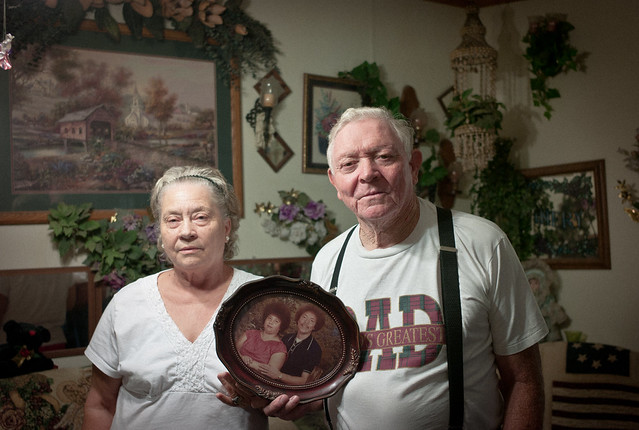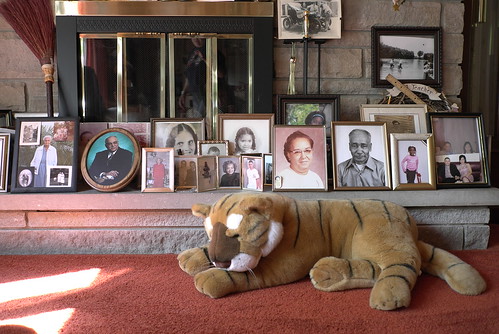Josephine Baker: A Chanteuse and a Fighter
The Journal of Transnational American Studies
Volume 2, Number 1 (2010)
18 pages
Konomi Ara
Tokyo University of Foreign Studies
This excerpt is from her newly-published biography of Josephine Baker, “A Fighting Diva.” It tells the intriguing story of Baker’s travels to Japan, her close friendship with the Japanese humanitarian Miki Sawada, and her adoption of a pair of Japanese orphans. Even after she achieved celebrity in France, Baker’s experience as a Black American led her to develop an antiracist philosophy at a worldwide level, and she combined political militancy in the public sphere with a personal commitment through the formation of an international multiracial household of children, the “Rainbow Tribe.”
Introduction: The Adoption of an Occupation Baby
Over half a century ago, in 1954, an African-American known as ‘The Amber Queen’ visited Japan. She was Josephine Baker (1906–1975), the dancer and singer who had
leaped to fame in Paris in the 1920s. The newspaper Asahi Shinbun described the feverish welcome she received on her first visit to the country:
“The amber-skinned singer Josephine Baker arrived from Paris on an Air France flight into Tokyo Haneda Airport at 9.40pm on the 13th. She has come to give fundraising performances for the abandoned mixed-race children of the Elizabeth Sanders Home in Oiso in Kanagawa Prefecture. The airport was thronged with many fans, including young women and black American soldiers, who had flocked in spite of the fine rain. Dressed in a black suit and a blue overcoat, Mrs Baker was greeted in the lobby by the director of the Sanders Home, Mrs Miki Sawada, the First Secretary of the French Embassy Monsieur Travis and the Daiei Studio actress Noboru Kiritachi among others. When two children from the Sanders Home, seven-year-olds Toshikazu Sato and Misao Kageyama, presented her with a bouquet, she gave the half-black boy and girl affectionate kisses on the cheeks. When she greeted all who had gathered, her voice was unexpectedly youthful for a 47 year old: ‘This is my first visit to Japan. Nothing could make me happier.’ She then headed for the Imperial Hotel with her pianist Milos Bartek and two others.” (14th April 1954)
As the article states, the purpose of Josephine’s visit to Japan was to give charity performances in support of abandoned mixed-race children. She had been invited by her friend Miki Sawada, the director of the Sanders Home, who was caring for the children known as ‘Occupation Babies’. The proceeds from Josephine’s performances around Japan would fund the construction of a boys’ dormitory at the Elizabeth Sanders Home, Baker Hall, and it still stands today although its use has changed. Josephine’s name and her words are carved at the bottom of a pillar on one of the corners of the building.
However, Josephine had a more important personal reason for her visit: she was going to adopt a child from the Home. Indeed, upon her arrival at the airport she asked Miki: “Where is my child?” and she was keen to meet the boy whom it was already agreed she would adopt. So Miki changed their plan, which was for Josephine to meet the child, Akio Yamamoto, three days later at the Elizabeth Sanders Home in Oiso, and instead took him to the Imperial Hotel the very next day. In the evening edition of Asahi Shinbun on the 14th, there is a photograph of a smiling Josephine holding Akio alongside an article headlined: “The First Meeting with Little Akio”.
Josephine subsequently visited the Elizabeth Sanders Home and adopted one more boy on the spur of the moment. Thus, the first two of Josephine’s 12 adopted children from different parts of the world and different cultural, religious and racial backgrounds, who would become known as The Rainbow Tribe, were from Japan. The youngsters would spend their childhoods at Josephine’s chateau, Les Milandes, in the Dordogne region of southwest France…
…This home for infants was founded in February 1948. The institution, which became well known as a home for mixed-race children, was a major project started by Miki Sawada. This eldest daughter of the Iwasaki family of the former Mitsubishi conglomerate, who had a privileged upbringing and who married the diplomat Renzo Sawada to become Miki Sawada, was moved by the problem of mixed‐race children in the wake of the War and decided to provide for such abandoned youngsters herself.
At its inception, Miki could not have imagined that the Home would turn into such a large-scale project with such longevity; but well over 1000 children subsequently arrived at and left this nest. Even today, the Home, a little altered, at any one time is home to almost 100 children whose birth parents have not been able to take care of them. Although the Home is no longer caring for ‘Occupation Babies’, the humanitarian spirit that forms the basis of its nurturing philosophy has not changed. One of the most powerful connections Miki formed was with the internationally famous African American performer Josephine Baker. Baker, who visited Japan for the first time in 1954, adopted two boys, Akio Yamamoto and Teruya Kimura, from among the mixed-race children known as ‘Occupation Babies’…
Read the entire article here.


